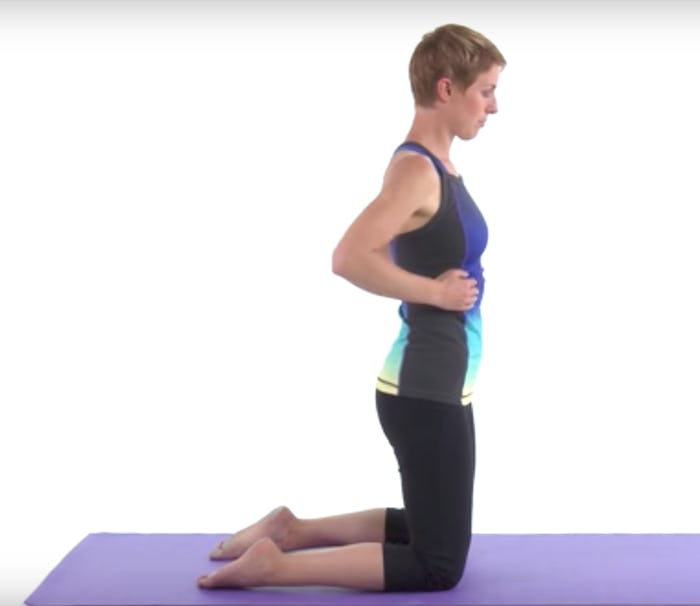One of the conditions afflicting postpartum women, but rarely talked about, is diastasis recti, a gap between the left and right walls of your abdominal muscles that occurs during pregnancy. But unlike some prenatal changes, this isn't always temporary — the muscles often fail to go back on their own. This separation is even the cause of the infamous "mommy pooch," but it can also cause lower back pain due to a weakened core. There's been an onset of programs said to improve this condition, one of the most popular being the MuTu System. But, does MuTu actually work?
The MuTu System, a 12-week online program created by Wendy Powell, postpartum exercise and fitness specialist, is based on the premise that using simple, focused exercises targeted to improve and strengthen core and pelvic floor function can diminish diastasis recti and help with weight loss. The daily program commitment is about 15 to 20 minutes a day, and avoids exercises that are said to further complicate diastasis recti, like traditional abdominal crunches (though many physical therapists find properly done abdominal bracing exercises to be perfectly safe).
A recent NPR article brought light to the very common, yet not often discussed, issue of diastasis recti, and noted that the condition can impact anywhere from 33 to 66 percent of postpartum women. While many of the exercises and programs said to get rid of diastasis recti can actually exacerbate the issue, NPR mentioned, a few are largely backed by doctors and physical therapists, namely, Dia Method, Tupler Technique, and the MuTu System. And the latter? Apparently because the MuTu System is not just a "quick fix," and its goal is to actually heal and re-align your core, many physical therapists back the program, NPR reported.
"Many people think that strengthening your ab muscles is what will help that 'mommy pooch,' but it's really about re-educating both core and pelvic floor muscles in order for them to function properly," Rita Desai, Doctor of Physical Therapy (DPT) tells Romper. "What you're trying to do is reduce the separation between the abdominal wall muscles, and while you do that, your overall strength will increase."
And, with your abdominal wall muscles back in place, your excess tissue and organs will be less likely to "stick out," thus minimizing the appearance of "mommy tummy." It's important to keep in mind that improving your core function takes more than just exercise. Your daily life, from the way you stand, walk, and sit, as well as how you carry things (including your baby), affect your core. "You have to eat right and make a conscious decision to be fit," Desai notes, "there's no quick fixes."
The MuTu System could work for you, but research remains mixed. Though many women are reporting a reduction in their diastasis recti via physiotherapy, like the MuTu System, NPR noted, it's still currently unclear if this has any positive effect on quality-of-life or functional outcomes.
The postpartum period can be an extremely complicated and confusing time. Along with learning how to take care of a new baby, and figuring out a new normal for daily life, many women also struggle to re-adjust to their new bodies. Some parts are bigger, some are smaller, and everything is softer and, well, different.
Making an effort to improve the bodies and minds of postpartum women in order to increase their overall mental health and physical wellness is a vital thing — supporting mothers goes beyond just helping them care for their babies. But, personally seeing a knowledgable doctor or physical therapist specializing in women's postpartum health will likely get you more accurate recommendations for your specific body than relying on a program.
